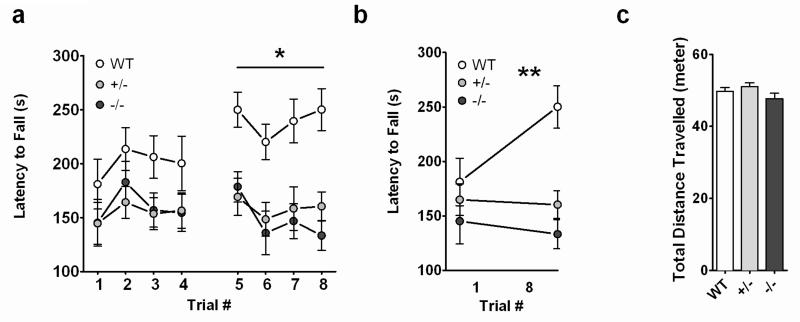Figure 2.
CX3CR1−/− and CX3CR1+/− mice show motor learning impairment but normal spontaneous activity (a, b, c). On the first day of training (trial 1-4) no difference between genotypes was observed in the learning ability in the rotarod task (a). On the second day of training (trials 5-8) as expected, wild-type mice learned the rotarod task as demonstrated by their ability to remain on the rod for longer periods. Neither the CX3CR1−/− nor the CX3CR1+/− mice showed significant improvement in motor coordination with training when compared to wild-type (a; Repeated Measure ANOVA, p<0.0001.). Wild-type (WT, white circles), CX3CR1+/− (gray circles), CX3CR1−/− (black circles). All data are presented as mean ± SEM p < 0.01. Comparison of the motor performance of each group of mice on trial 1 versus trial 8, show that wild-type performed significantly better than CX3CR1−/− and CX3CR1+/− (b; linear regression, p<0.001). CX3CR1 −/− and CX3CR1+/− mice show normal spontaneous locomotor activity (c). Wild-type, CX3CR1−/− and CX3CR1+/− mice do not show any difference in total distance traveled in the open field (c). Wild-type (WT, white bar), CX3CR1+/− (gray bar), CX3CR1−/− (black bar). All data are presented as mean ± SEM p < 0.01

